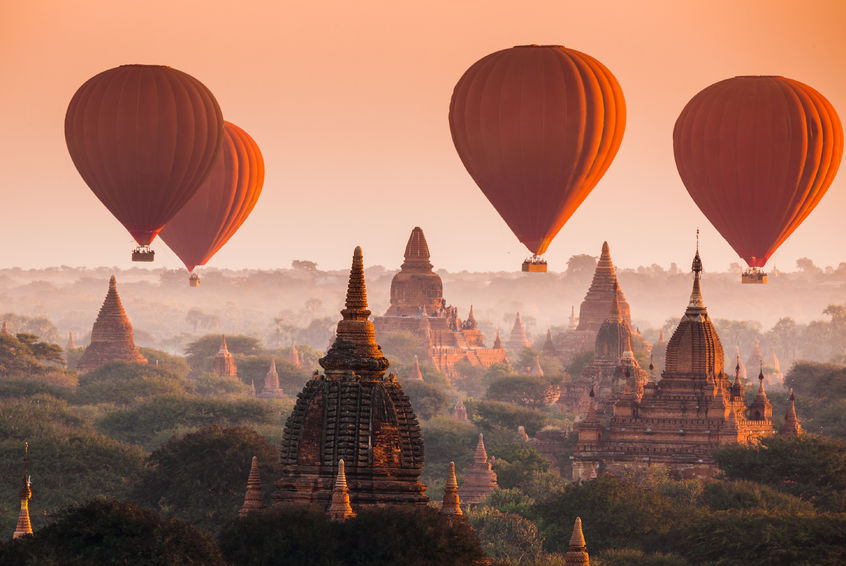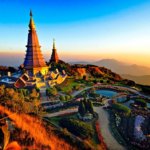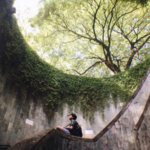What the King Left Unsaid: How I Traveled to Myanmar on Foot and by the Books
Through Orwell's vision and Kipling's verses, Myanmar unfolds its wonder, pride and history.
by Trish Vega | August 13, 2016
Some people prepare for trips by buying travel guides and checking out user reviews; I read books. Most days, reading is travel enough for me, and the appeal of exploring new places lies in reconciling experience with the worlds I’ve imagined.
Preparing for Myanmar was slightly tricky. What little I knew about the country was filtered through a colonial lens and popstar activism. Contemporary literature is largely unavailable in translation, not least because government censorship in the 1960s dealt a blow to their literary scene.
So I read what I could and let Myanmar—or its slightly beaten touristy bits—tell me its story.
In Yangon
Burmese Day by George Orwell
Before he found critical acclaim as the author of 1984 and Animal Farm, George Orwell was a policeman manning an outpost in the twilight days of the British Raj. His experiences formed the basis of his first novel, Burmese Days, which depicts the complacency and corruption of the British and Burmese officials in power. Unsurprisingly, this novel was one of those banned back in the day, but an award-winning Burmese translation has made it available to a new generation of readers.
There isn’t much of Rangoon in Orwell’s novel, but it is easy to picture him walking down the streets of present-day Yangon; the city has the highest concentration of colonial-era buildings in Southeast Asia. Some buildings have been re-purposed, like the red-brick High Court building which reminds me a bit of St. Pancras station; a greater number lie in disrepair.
We stop for a late lunch at The Strand Hotel, one of Orwell’s old haunts. I order an organic Myanmar chicken burger with tamarind ketchup, and wash it down with a pint of Dagon lager. I bring my leftovers with me; having paid approximately US$20 for the meal, I wasn’t about to let it go to waste.
The Strand is currently closed for renovation until November 2016.
In Bagan City
Burmese Folk Tales by Maung Htin Aung
Once the capital of the Kingdom of Pagan from the 9th to 13th centuries, the city of Bagan is now best known for its picturesque red plains dotted with thousands of temples and pagodas, each built by kings as an exercise of faith and display of power. In its heyday, some 10,000 temples occupied what is now known as the Bagan Archaeological Zone, these days over 2000 remain. Fancy types take a luxury balloon ride for a birds’ eye view, renting a horse-cart and guide is a cheaper, convenient option; we opted to rent bikes so we could head off on our own. I’m told there’s a US$20 fee to explore the zone, but we never got around to paying—perhaps because we spent more time exploring the smaller gu-style structures built for meditation.
One temple we did not steer clear of was Ananda Temple, which dates back to the 11th century and is arguably the best preserved of the lot. It is also one of the few that remain in use; sometime between December and January, the temple hosts a week-long festival celebrating traditional farm life.
Unsurprisingly there are many peddlers outside the gates, selling postcards, sand paintings, and pirated books. To assuage my guilt, I steer past the coffee table books and the literary fiction and pick up a collection of folktales instead.
In Bagan-Mandalay
Mandalay by Rudyard Kipling
The soldier-narrator of Kipling’s poem waxes nostalgic about floating up the Irrawady and meeting a Burmese beauty on the steps of the Moulmein Pagoda. My road to Mandalay was not quite as picturesque, since long ferry rides during monsoon season are ill-advised. Instead we do as the locals do and take the “mini-bus,” which are not buses but vans that pick up passengers at designated stops; travel time is around six hours and the fare comes with complimentary bottled water. I was one of two female passengers so I was assigned the separate seat; there were at least two pairs of monks onboard and they are forbidden from sitting next to women in public transport.
That said, there are no rules forbidding them from participating in shaky selfies.
Travel by mini-bus it suited our schedule but we failed to consider the locals’ plans. We arrive while a Manchester United game is being broadcast; there were no taxis in sight. As it turns out, the people of Mandalay are Reds fans and activity comes to a standstill when a match is on. We eventually found motorcycle hires to take us to the hotel so we could unload our stuff, watch the game at a nearby restaurant and toast the victors with a glass of Mandalay beer.
In Mandalay
The Glass Palace by Amitav Ghosh
The story of Mandalay is the story of King Mindon, Myanmar’s penultimate king. It was during his reign that the royal capital was moved to Mandalay, ostensibly to fulfill a Buddhist prophecy but also to stave off the British forces who had already taken over lower Burma.
Mindon’s reign, as they tell it, was a golden age for Buddhism and the arts, as well as for bureaucratic and fiscal reforms. Its physical manifestation is the grid-like planning of the royal capital: at its center is the Mandalay Palace complex, one of the tourist attractions covered by the Mandalay Archaelogical Zone pass (US$10 for six sites). The palace itself is a reconstruction—most of it was bombed during World War II—and it stands empty, save for a few exhibits on Mindon’s life. His son and successor Thibaw is an afterthought; history is unkind to those who give up a nation’s sovereignty.
Fiction flourishes in these spaces that history has left fallow. Amitav Ghosh devotes portions of The Glass Palace to Thibaw’s unseating and eventual exile in India, its opening chapters reimagining the fall of Mandalay Palace, its ornate teak walls and bejeweled stone statues bearing silent witness to the invasion and looting.
Outside of the complex, the location I wanted to visit the most was the Kuthodaw pagoda, touted as the world’s largest book. Another Mindon creation, its central stupa is surrounded with hundreds of encased marble slabs, each representing a page from the Tipitaka, the collected teachings of Theravada Buddhism.
As I walk through the pages, I catch a glimpse of nearby Shwenandaw —Mindon’s original chambers from the palace, reassembled into a monastery after his death and thus saved from bombing—and Atumashi, which used to house a Buddha made from the ashes of Mindon’s robes. His is the story they want to tell tourists, and considerable resources have been devoted to this cause; I took the story home with me, but almost three years later, I still wonder about the things they have left unsaid.
Also read: Less-Traveled Summer Destinations That You Can Explore in Asia













